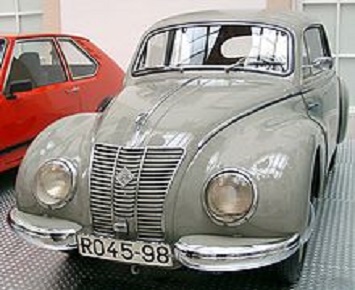Live in USA
 |
Audi has been a majority owned (99.55%) subsidiary of Volkswagen Group since
1966, following a phased purchase of AUDI AG's predecessor, Auto Union, from
Daimler-Benz.10 Volkswagen relaunched the Audi brand with the 1965 introduction
of the Audi F103 series.
The company name is based on the surname of the
founder, August Horch. "Horch", meaning "listen" in German, becomes "Audi" when
translated into Latin. The four rings of the Audi logo each represent one of
four car companies that banded together to create Audi's predecessor company,
Auto Union. Audi's slogan is Vorsprung durch Technik, meaning "Advancement
through Technology". Recently in the United States, Audi has updated the slogan
to "Truth in Engineering". Audi is a member of the "German Big 3" luxury
automakers, along with BMW and Mercedes-Benz, which are the three best-selling
luxury automakers in the world.
In August 1928, Jørgen Rasmussen, the owner
of Dampf-Kraft-Wagen (DKW), acquired the majority of shares in Audiwerke AG.22
In the same year, Rasmussen bought the remains of the U.S. automobile
manufacturer Rickenbacker, including the manufacturing equipment for
eight-cylinder engines. These engines were used in Audi Zwickau and Audi Dresden
models that were launched in 1929. At the same time, six-cylinder and
four-cylinder (the "four" with a Peugeot engine) models were manufactured. Audi
cars of that era were luxurious cars equipped with special bodywork.
In 1932,
Audi merged with Horch, DKW, and Wanderer, to form Auto Union AG, Chemnitz. It
was during this period that the company offered the Audi Front that became the
first European car to combine a six-cylinder engine with front-wheel drive. It
used a powertrain shared with the Wanderer, but turned 180-degrees, so that the
drive shaft faced the front.
Before World War II, Auto Union used the four
interlinked rings that make up the Audi badge today, representing these four
brands. This badge was used, however, only on Auto Union racing cars in that
period while the member companies used their own names and emblems. The
technological development became more and more concentrated and some Audi models
were propelled by Horch or Wanderer built engines.
Reflecting the economic
pressures of the time, Auto Union concentrated increasingly on smaller cars
through the 1930s, so that by 1938 the company's DKW brand accounted for 17.9%
of the German car market, while Audi held only 0.1%. After the final few Audis
were delivered in 1939 the "Audi" name disappeared completely from the new car
market for more than two decades.
This summary is consistent with the
conclusions of NHTSA's most technical analysis at the time: "Audi
idle-stabilization systems were prone to defects which resulted in excessive
idle speeds and brief unanticipated accelerations of up to 0.3g which is similar
in magnitude to an emergency stop in a subway car. These accelerations could not
be the sole cause of (long-duration) sudden acceleration incidents (SAI), but
might have triggered some SAIs by startling the driver.35 The defective
idle-stabilization system performed a type of electronic throttle control.
Significantly: multiple "intermittent malfunctions of the electronic control
unit were observed and recorded бн and were also observed and reported by
Transport Canada."35
With a series of recall campaigns, Audi made several
modifications; the first adjusted the distance between the brake and accelerator
pedal on automatic-transmission models.28 Later repairs, of 250,000 cars dating
back to 1978, added a device requiring the driver to press the brake pedal
before shifting out of park.28 A legacy of the Audi 5000 and other reported
cases of sudden unintended acceleration are intricate gear stick patterns and
brake interlock mechanisms to prevent inadvertent shifting into forward or
reverse. It is unclear how the defects in the idle-stabilization system were
addressed.
Download